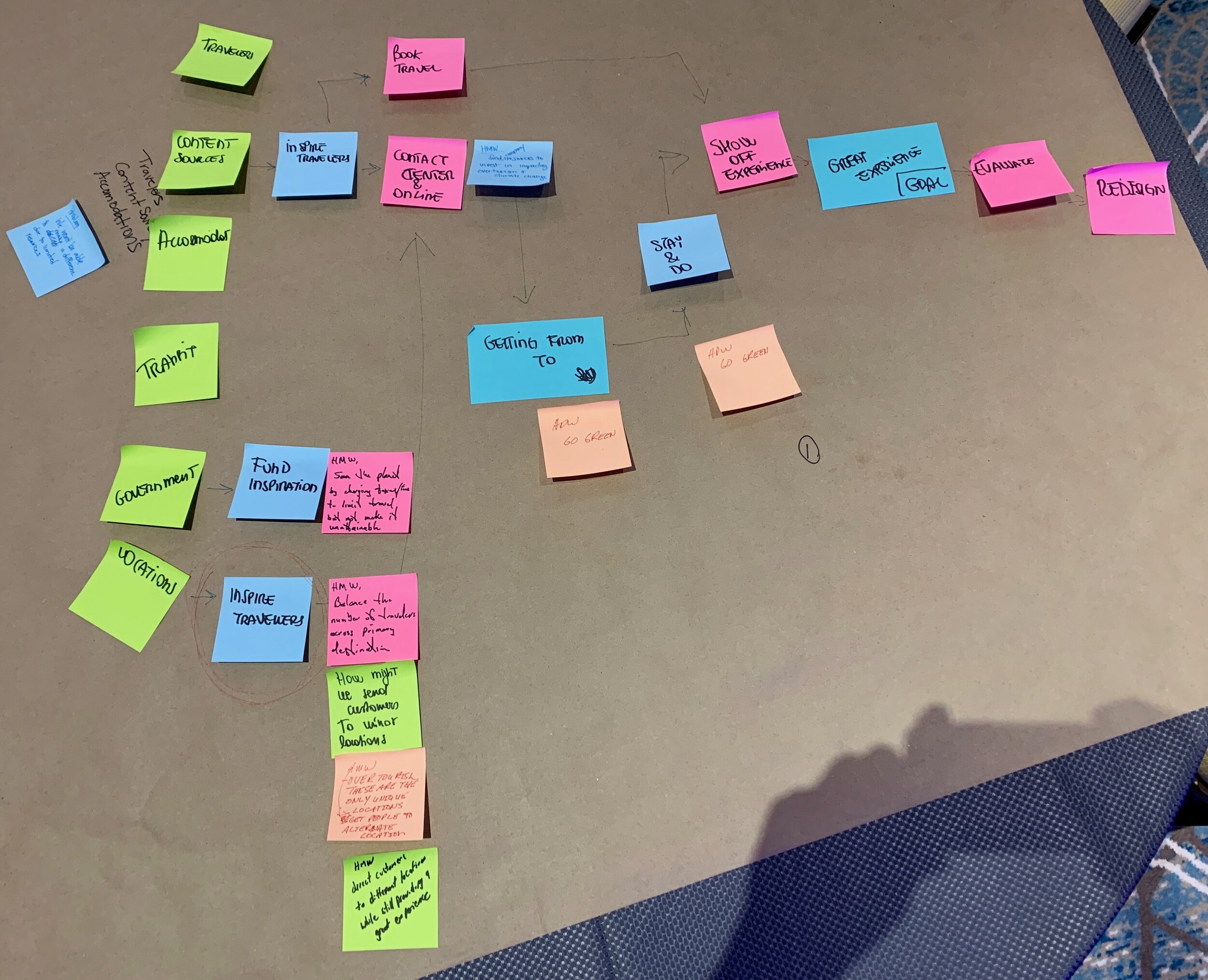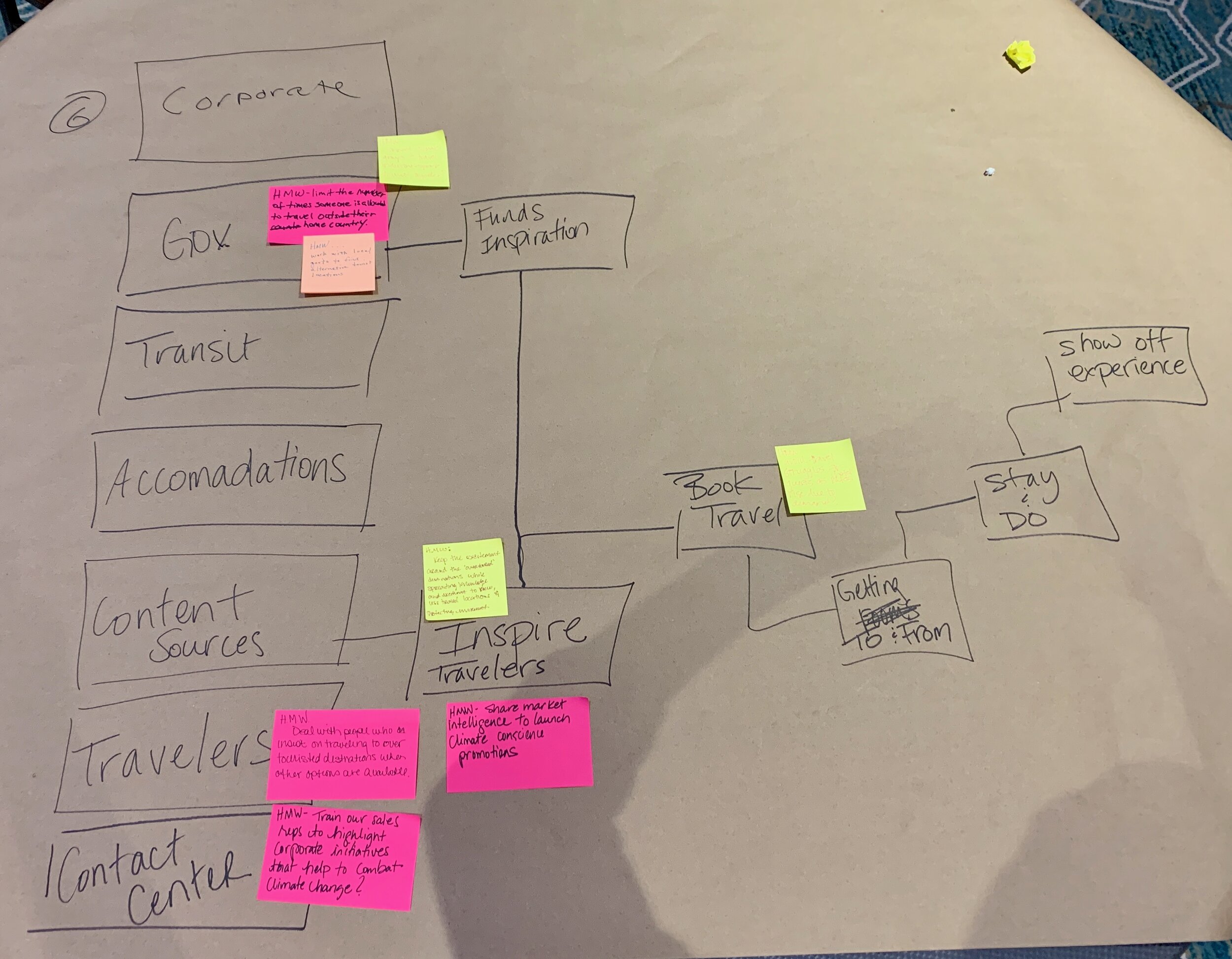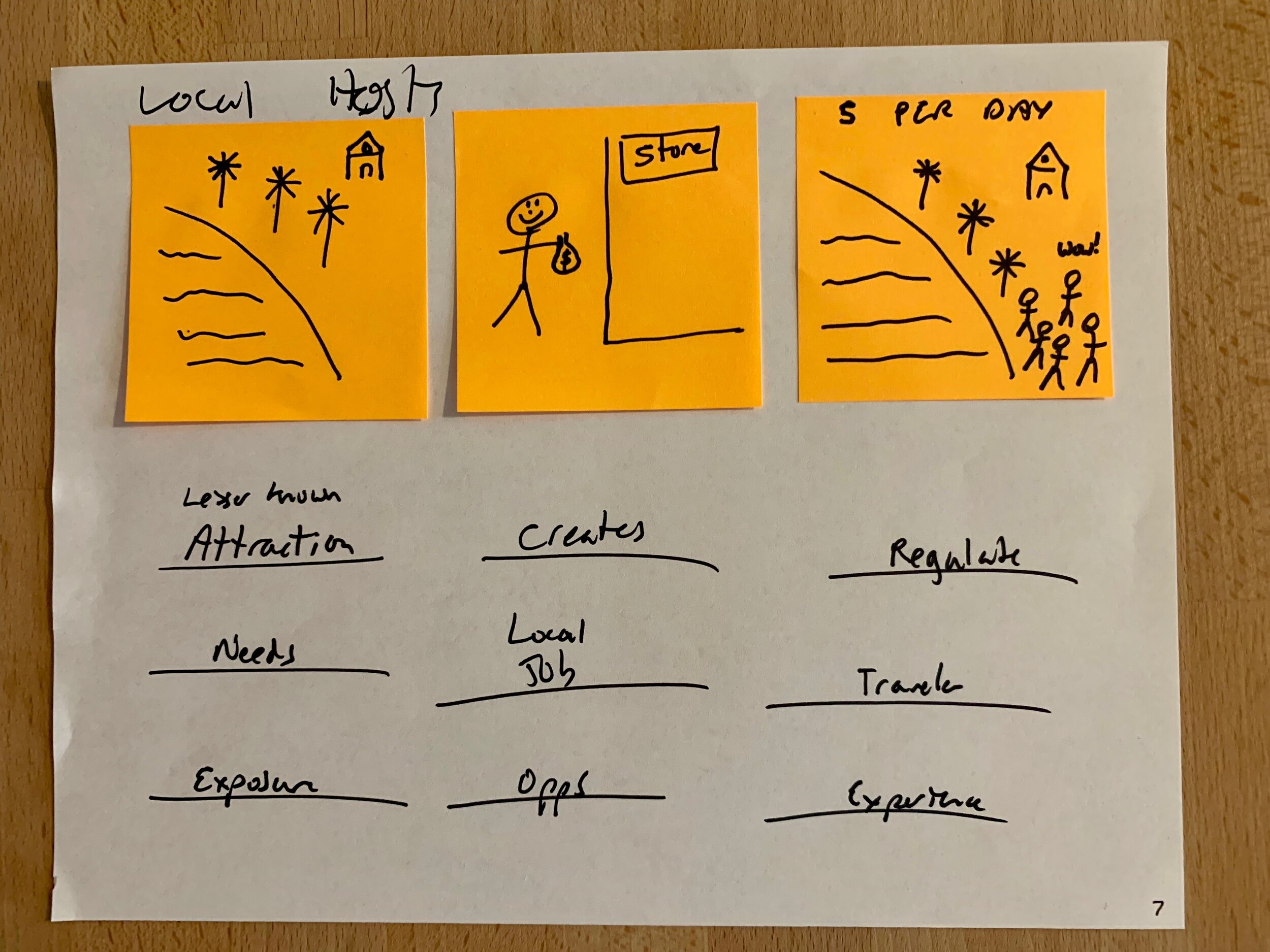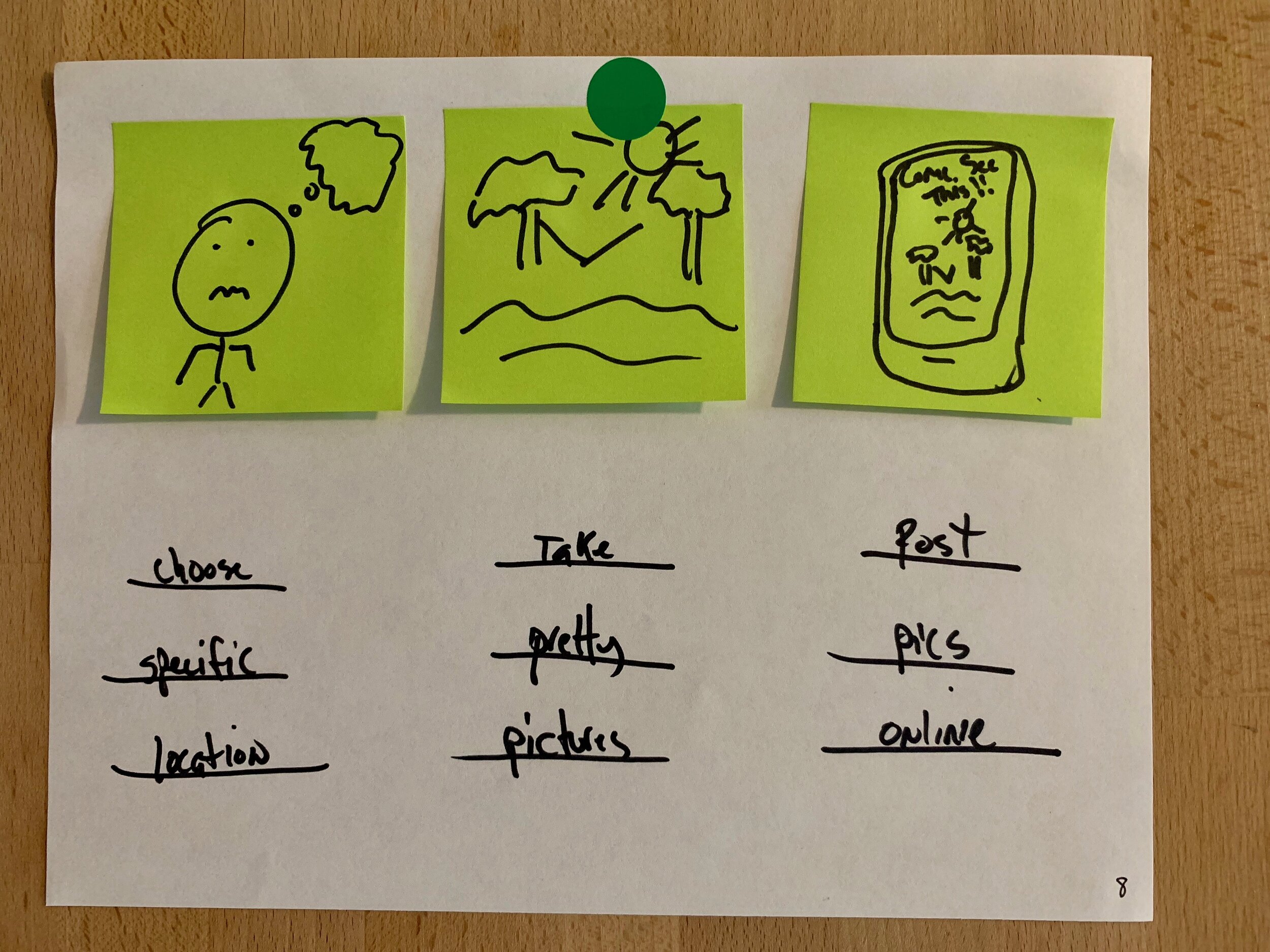
Recap:
What’s a Design Sprint?
The Design Sprint is a (typically 5-day) process for testing new ideas, validating products, and solving business problems. Originally created by the team at Google Ventures (GV), the Sprint framework was designed to condense the process of defining a problem, creating solutions, and testing with users into just one week. (We offer Sprint options ranging from 1 day to 1 week to 1 quarter. Contact us to discuss how we can fit a Design Sprint to your needs.)
By bringing together a small team of key stakeholders for this intensive period, we democratize the problem-solving process by placing participants on an equal footing, regardless of title, standing, or office politics. Each participant has equal opportunity to champion a solution to the problem at hand and share with the group; however, the ultimate decision-making power is placed in the hands of a single person (aptly named the Decider for the duration of the Sprint). The exercises in a Sprint are explicitly designed to minimize the often endless debate and conversation that slows down the traditional group brainstorm.
How can my company benefit from a Design Sprint?
When move fast and break things isn’t an option, how can companies make innovation a point of action? The Design Sprint is a repeatable framework that can help your team make innovation tangible by condensing the time it takes to move from idea to customer feedback into just a few days. The Sprint framework can be applied to anything from brand and marketing ideas to digital products and services, and more. We’ll work with your team to bring together the right decision-makers, overcome internal politics, and speed up your product development cycle to validate ideas in days instead of months.
A RECAP OF OUR MINI-SPRINT:
How might we combat the effects of overtourism and climate change while continuing to provide unforgettable experiences for travelers?

EVERY SPRINT STARTS WITH A PROBLEM/GOAL:
Our audacious Sprint goal (above) was inspired by a slew of recent articles exploring the impacts of overtourism and climate change:
The effects of climate change and overtourism on global destinations will converge over the course of the coming decades. Leaders need to start planning now for a world defined by overcrowding and limited resources.
— Andrew Sheivachman, Skift.com
Unfortunately, there will come a point where over-tourism makes travel both logistically inconvenient and much less enjoyable for everyone.
— Noah Smith, Bloomberg.com
As ice caps melt and coral reefs die, tourists are rushing to see the world’s most precious treasures before they’re gone. Those visits can raise much-needed awareness, but the extra attention isn’t always for the best.
— Mitchell Friedman, The Agenda
Mapping The Problem:
It’s one thing to define an audacious problem for our Sprint. But in order to approach the problem systematically, it helps to visualize the key players and steps that lead to our goal.
Once the Sprint team has mapped the problem clearly and examined the journey with the help of internal and external experts, we choose a focal area. This represents the section of the map that our Sprint team believes is representative of the greatest opportunity.
Our Maps:
Ideating Solutions:
Our sketching process for ideating solutions is broken into steps. This helps to keep a Sprint team focused and ensures that everyone has time to articulate their solution clearly.
Our Solution Sketches:
Creating A Prototype:
The goal of any Design Sprint is to move from problem to solution to customer feedback, quickly. The prototype is a pivotal piece of this process. A good prototype is an approximation of the desired solution. It gives us something to rally around during user testing so that we can get valuable feedback.
We can prototype just about anything in a day. An app or web experience is relatively straightforward (the tools already exist to prototype these solutions). But more unique or complex prototypes can also be created. Need to test a physical product that can’t be built in a day? How about a sales brochure that talks about the features. Need users to experience a specific service? We can approximate that as well by using the Sprint team as “actors.” Nothing is impossible.
Generally, participants on the Sprint Team create the prototype with the help of other resources from your company. Design Sprint Consultants also offers Sprint options where we handle the design and creation of the prototype for your team. Please contact us to begin planning a Sprint that fits your needs.
User Testing:
The purpose of a Design Sprint goes beyond a structured methodology for repeatable innovation and solving complex problems. While the framework does solve these needs, the goal of any single Sprint is to get feedback on our solution from potential customers/users.
The Design Sprint framework was created to circumvent this issue. By carrying our ideation process through the prototyping and user testing phases, we can get immediate feedback to our proposed solution and course correct (or validate!) our idea without spending precious time and resources on a complete development cycle. This helps us hone in on customer needs and quickly determine whether our solution will achieve product/market fit.
Book now for 15% off.
IARE Conference Attendees:
Book by Dec. 15, 2019 to receive 15% off your first Design Sprint
We’re offering special pricing, exclusively for IARE conference attendees. Book a Design Sprint for your company by December 15th, 2019, and we’ll cut 15% off the price*.
*Your Design Sprint must be booked and scheduled by December 15th, 2019 (including payment of the up-front deposit to hold your scheduled Sprint time). Your Sprint does not need to be completed or even started by the stated date to receive the discount.






















































